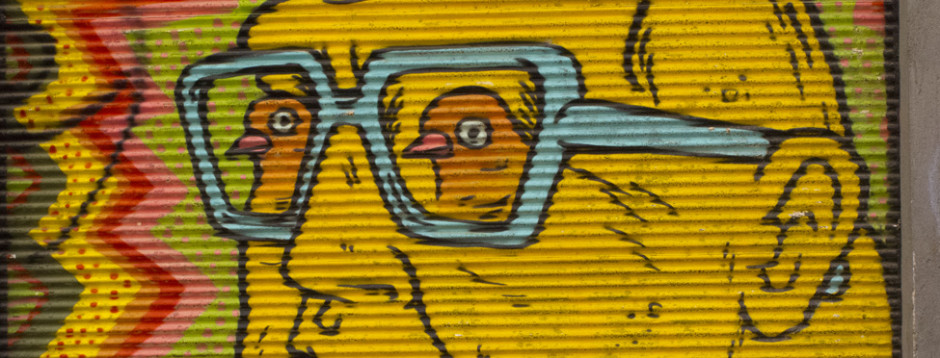Mapping globalization at Aicon
CityArts June 11, 2012
The current exhibition at Aicon Gallery, Mapmakers: The Evolution of Indian Art, got me thinking about globalization. I will freely admit to a certain amount of cultural bias when looking at art. I suppose we all have it; some of us are just more willing to pony up and admit it. When I go to look at a show of contemporary Italian art (for example), I don’t expect to see art that is particularly “Italian” in nature. I expect work that is about contemporary issues, materials and/ or politics, but that is in many ways similar to what I might see in from American artists in New York City.
Right or wrong, I go to a show of non- Western art with the full expectation that I’m going to see artwork that is somehow intrinsically tied to that culture. One hopes the work has a unique and contemporary tweak to it, but I look forward to seeing artwork that has some overt relation to the culture from which it has evolved.
Perhaps because modernism came later to non-Western countries, I expect to be surprised and delighted by the integration of traditional and contemporary vocabularies. And while I don’t believe I am alone in this perspective, my viewpoint—indeed this review—reveals as much about my bias as it do about the art I am reviewing.
Having enjoyed and admired Parts One and Two of The Rubin Museum’s groundbreaking exploration of the development of modernist and contemporary art in India, I was eager to experience the Aicon Gallery’s view of the contemporary Indian art scene. What I saw was a mixed bag of art trends from the past decade, some interesting, but largely populated with the same tired ideas with which American art schools have been filling U.S. galleries. Globalization has made all art look the same.
The painting by Baiju Parthan, “Progression (Last Supper—After Da Vinci)” is painted as if it were an altered film strip, washed out and blurry. It is about eight feet long, with inexplicable architectural red lines thrusting into the frame in the vicinity of Christ’s head. Cool and passionless, its colors are reduced to icy blues, black and white. A bland and formulaic response to the great passion contained in the original.
Baiju Parthan, “Progression (Last Supper—After da Vinci),” oil and acrylic on canvas. 2008,
Perhaps I’m being a wee bit tough. There are some standout pieces that have the feel of authenticity to them. Nitin Mukul’s painting “Fountain” (2008) is a vigorous and engaging abstracted vision of water. The painting is beautiful. Shapes of water droplets swirl in an almost psychedelic mass of color and pattern. It not only transcends the subject of water, but, more significantly, transcends cliché.
But in the main, the contemporary Indian artists on display are turning out much the same work as anywhere else in the world. I miss the sense of place that is so prevalent in all art forms that come from India. It is part of what draws me to the culture. Perhaps as the place itself becomes more global, its most contemporary and worldly artists cannot help but reflect the trend. If so, then some of the works on display at Aicon succeed most admirably. But in its attempt to show how global contemporary Indian art has become, the show’s curators have lost the pulse of what makes Indian art so very unique and moving in the first place.

